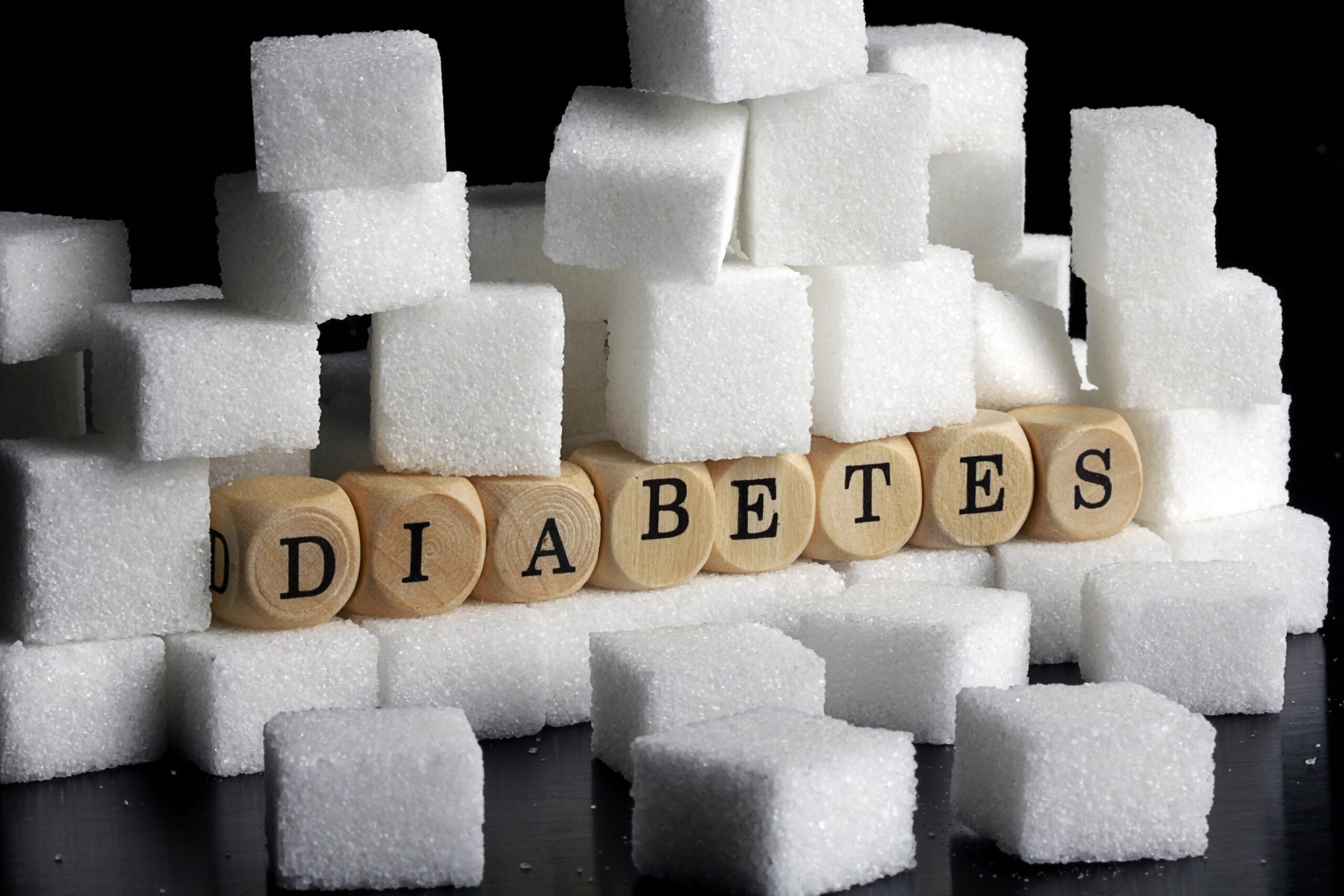The Center for Disease Control and Prevention (CDC) reports that 38.4 million people in the United States have diabetes, which is 11.6% of the population. If you or someone you know has recently been diagnosed with diabetes, it’s important to know how diet can play a role in your treatment.
What Is Diabetes?
Diabetes occurs when your blood glucose, or blood sugar, is above normal levels. In people without diabetes, insulin, a hormone produced by the pancreas, helps glucose travel to the body’s cells to give the body energy. In people with diabetes, the pancreas either doesn’t produce enough insulin or the body doesn’t process the insulin correctly, causing the glucose to remain in the blood. This can cause serious long-term health problems.
There are two main types of diabetes.
Type 1 Diabetes
In people with Type 1 diabetes, the pancreas produces little or no insulin because the body’s immune system destroys the cells in the pancreas that produce insulin. It’s usually diagnosed during childhood or young adulthood and requires taking insulin daily for life.
Type 2 Diabetes
In people with Type 2 diabetes, the body doesn’t use insulin correctly, or the pancreas is not producing enough insulin to control blood glucose levels. Type 2 diabetes can often be controlled with medication and lifestyle changes.
Can a Poor Diet Cause Diabetes?
The cause of Type 1 diabetes is not well understood, but it’s likely a combination of genetic and environmental factors, such as a virus that triggers the body’s immune system to attack insulin producing cells. Type 1 diabetes is not caused by diet or lifestyle.
Type 2 diabetes can also be due to genetic or environmental factors, but diet can play a role as well because high body fat levels can affect the production or processing of insulin. Eating a healthy diet and maintaining a healthy weight can prevent Type 2 diabetes.
Diet and Diabetes Management
The treatment of diabetes involves diet management. In Type 2 diabetes, this often involves a diet for weight loss and weight maintenance. In both types of diabetes, a healthy diet is important to prevent serious long-term health consequences.
No one-size-fits-all diet for diabetes exists because everyone’s needs are different, but the goal of the diet is to control blood glucose levels. You should work with a dietician and your physician to create a diet plan that’s right for you.
What Makes a Good Diabetes Diet?
In general, a good diabetes diet involves avoiding extra carbohydrates and calories, eating a consistent diet, and eating at regular scheduled times.
Several types of food should be part of the diet, and some should be avoided.
Foods to Eat
Healthy carbs
Carbohydrates directly affect blood sugar levels. You should eat a consistent amount of carbohydrates every day, and they should be healthy carbohydrates that don’t have added sugar, fats, or salt.
Healthy carbs include:
- Non-starchy vegetables like broccoli, tomatoes, lettuce, cucumbers, and green beans
- Fruits like apples, strawberries, cantaloupe, and blueberries
- Whole grains including brown rice, and whole grain breads and pasta
- Legumes like lentils, black beans, and kidney beans
- Low fat dairy products
The portions of each type of healthy carbohydrate should be consistent in size, and are best determined by a dietician.
Fiber
Fiber helps to control blood sugar levels. Examples of high fiber foods include:
- Whole fruits and vegetables
- Nuts
- Legumes including beans and peas
- Whole grains
Fish
Eating fish that contains omega-3 fatty acids can help to prevent heart complications from diabetes. The best types of fish to eat include:
- Salmon
- Mackerel
- Sardines
- Tuna
You should try to eat fish twice a week unless your dietician recommends otherwise.
Good fats
Good fats can help to control your cholesterol, which is important in diabetes management. Good fats are monounsaturated and polyunsaturated fats, rather than saturated and trans fats. Good fats include:
- Nuts including almonds, peanuts, and walnuts
- Avocadoes
- Olive or peanut oil
- Flaxseed
- Sunflower and pumpkin seeds
- Coconut oil
What Not to Eat
Several types of foods should be avoided.
- Saturated fats found in high fat dairy foods and animal proteins such as beef, butter, sausage, and bacon
- Trans fats from processed foods and snacks, baked goods, and margarine
- Cholesterol from foods like high fat dairy products, high fat proteins, egg yolks, and liver
- Sodium over the recommended amount, which is about 2300 mg daily for a diabetic
The ADA Plate Method
The American Diabetes Association (ADA) recommends the plate method as a simple way to keep your diet in proper balance.
- Half your plate should be non-starchy vegetables
- A quarter should be lean protein
- The last quarter should be a good carbohydrate like brown rice
You can also have a small amount of good fats, low-fat dairy, and fruit.
In Closing
A healthy diet is critical for diabetes management and can even prevent Type 2 diabetes. Diet is also an important factor in preventing long-term diabetes complications. If you have either type of diabetes, work with your physician and a dietitian to create the best meal plan for you. With proper treatment and diet management, you can live a long and healthy life despite diabetes.

